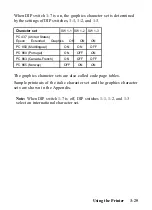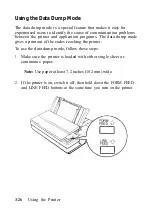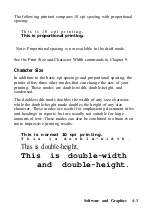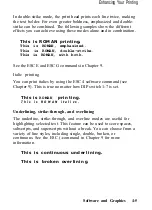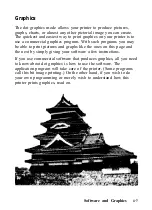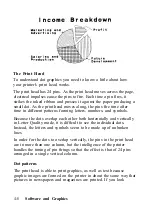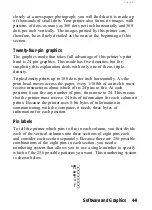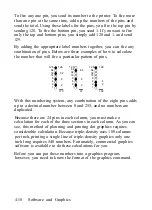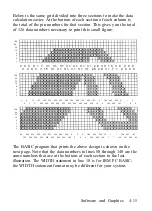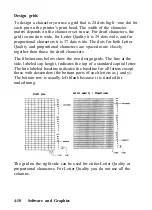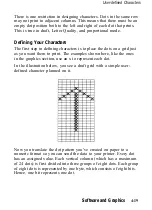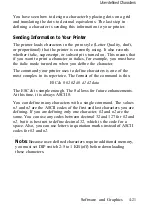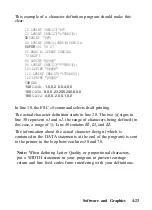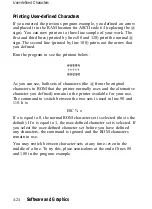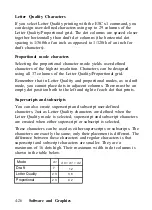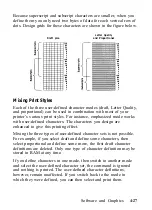
Column Reservation Numbers
The graphics command requires more than one number to specify
how many columns to reserve because one line can use thousands of
columns, but the printer does not use numbers larger than 255 in
decimal. Therefore the graphics mode command uses two numbers,
n1
and
n2,
for reserving columns.
To find
n1
and
n2,
divide the total number of columns by 256. The
result is
n2;
the remainder is
n1.
Because the command is set up for
two numbers, you must supply two even if you need only one.
When you need fewer than 256 columns, just make
n1
the number of
columns you are reserving and make
n2
a zero.
For example, if you wish to send 1632 columns of graphics data,
n1
should be 96 and
n2
should be 6 because 1632 = 96 + (6 x 256).
The printer interprets the number of bytes specified by
n1
and
n2
as
graphics data, no matter what codes they are. This means that you
must be sure to supply enough bytes of graphics data or the printer
stops and waits for more data and seems to be locked. If, on the
other hand, you supply too much graphics data, the excess is
interpreted and printed as regular text.
A Simple Graphics Program
This first program is just a simple example to show you how the
graphics command, column reservation numbers, and data can be
used in a BASIC program.
4-12
Software and Graphics
Summary of Contents for 1010
Page 1: ......
Page 2: ...EPSON LQ 510 1010 User s Manual ...
Page 182: ...Chapter 7 Troubleshooting Printing 7 2 Paper Handling 7 7 Options 7 10 Troubleshooting 7 1 ...
Page 249: ...Appendix Proportional Width Table A 2 Character Sets A 6 A 1 ...
Page 257: ...PC 865 Norway CODE 0 1 2 3 4 5 6 7 8 9 A B C D E F 0 1 2 3 4 5 6 7 8 9 A B C D E F A 9 ...
Page 271: ......
Page 274: ......
Page 275: ......
Page 276: ......
Page 278: ......
Page 279: ......

